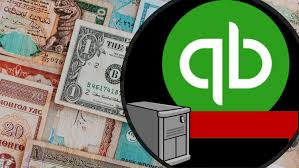Learn to record transactions using multiple currencies from a certified public accountant (CPA)
SUMMERY
This course provides a comprehensive guide to using QuickBooks Desktop for managing transactions involving multiple currencies. It is designed to help accountants, bookkeepers, and business owners who deal with foreign currency transactions by teaching them how to activate and manage the multicurrency feature in QuickBooks. Additionally, it provides insight into handling accounts receivable, accounts payable, and forward contracts involving foreign currencies.
What You’ll Learn:
- Access to QuickBooks: The course walks you through how to gain access to QuickBooks Desktop, including a possible free 30-day trial that is often available from Intuit, the software’s owner.
- Turning on the Multicurrency Feature: You’ll learn how to enable the multicurrency feature in QuickBooks Desktop, a critical step for anyone dealing with foreign currency transactions.
- Setting Up Accounts: The course will cover how to set up accounts in QuickBooks that relate to multicurrency transactions. This includes the essential account types like:
- Cash accounts: For holding different foreign currencies.
- Accounts Receivable: For tracking money owed to you in foreign currencies.
- Accounts Payable: For tracking money you owe in foreign currencies.
- Handling Foreign Currency Transactions: You will learn how to enter transactions that involve foreign currency accounts in both the sales and purchases cycles.
- Sales Cycle: This includes transactions related to foreign currency accounts receivable. For example, if you sell goods or services and expect to be paid in a foreign currency, the course teaches you how to manage this in QuickBooks.
- Purchases Cycle: This includes transactions related to foreign currency accounts payable, such as when you purchase goods or services from a supplier who requires payment in a foreign currency.
- Forward Contracts for Speculation: The course covers how to record forward contracts for speculative purposes. Forward contracts are agreements to buy or sell a foreign currency at a future date for a fixed price. You will learn how to track and record these transactions in QuickBooks.
- Forward Contracts for Risk Management: Forward contracts are also used to reduce risk in foreign currency transactions. For instance, if you have a payment due in a foreign currency months in advance, a forward contract locks in the exchange rate, protecting you from fluctuations. The course demonstrates how to enter these contracts into QuickBooks to ensure your financial statements accurately reflect their impact.
Course Description:
The course begins with instructions on how to get access to QuickBooks Desktop, including the possibility of securing a 30-day free trial. This free trial can be an excellent opportunity for learners to explore the software without committing to a purchase upfront.
Next, the course provides a detailed explanation of how to activate the multicurrency feature in QuickBooks. Enabling this feature is crucial for businesses that deal with foreign currencies, as it allows QuickBooks to manage transactions in multiple currencies, ensuring accurate financial reporting.
A significant portion of the course is dedicated to setting up the accounts that will be most affected by foreign currency transactions. These include:
- Cash accounts, which may hold balances in foreign currencies, requiring QuickBooks to track the home currency equivalent for accurate financial statements.
- Accounts Receivable, which involves recording sales made to customers in foreign currencies. Even though you may receive payment in a foreign currency, your financial statements will need to show the amount in your home currency.
- Accounts Payable, which includes recording purchases made from suppliers where payment will be made in a foreign currency. The course teaches you how to record the payable in your home currency for accurate reporting.
Once these accounts are set up, the course takes you through real-world examples of how to manage foreign currency transactions in the sales and purchases cycles. For example, when selling goods or services on credit to a customer in a foreign country, QuickBooks needs to track the foreign currency receivable and automatically convert it to your home currency for financial statement purposes. Similarly, if you purchase goods on credit from a supplier in a foreign country, you’ll need to track the payable in the foreign currency and record the equivalent amount in your home currency.
The course also covers more advanced topics like forward contracts. These contracts are agreements to exchange currency at a future date for a set exchange rate. You’ll learn how to record forward contracts in QuickBooks, both for speculative purposes (when the goal is to profit from currency fluctuations) and for risk management (when the goal is to protect against currency exchange rate fluctuations).
Forward contracts for risk management can be particularly useful for companies that need to settle accounts payable or receivable in a foreign currency months after the transaction. By locking in the exchange rate with a forward contract, the company can protect itself from adverse changes in the exchange rate. This course teaches you how to manage these contracts in QuickBooks to ensure your financial statements accurately reflect your foreign currency exposure.
Who This Course Is For:
This course is ideal for:
- Accountants who manage the books for clients dealing with foreign currencies.
- Bookkeepers responsible for entering transactions and maintaining accurate financial records for businesses that operate internationally.
- Business Owners who manage their own finances and want to understand how to accurately record foreign currency transactions in QuickBooks.
Conclusion:
By the end of this course, you will have a deep understanding of how to use QuickBooks Desktop to manage transactions involving multiple currencies. Whether you’re an accountant, bookkeeper, or business owner, you’ll learn how to set up the multicurrency feature, manage accounts receivable and payable in foreign currencies, and use forward contracts for speculation or risk reduction. This will not only help streamline your accounting processes but also ensure that your financial statements accurately reflect your foreign currency exposure, giving you more control over your finances.










